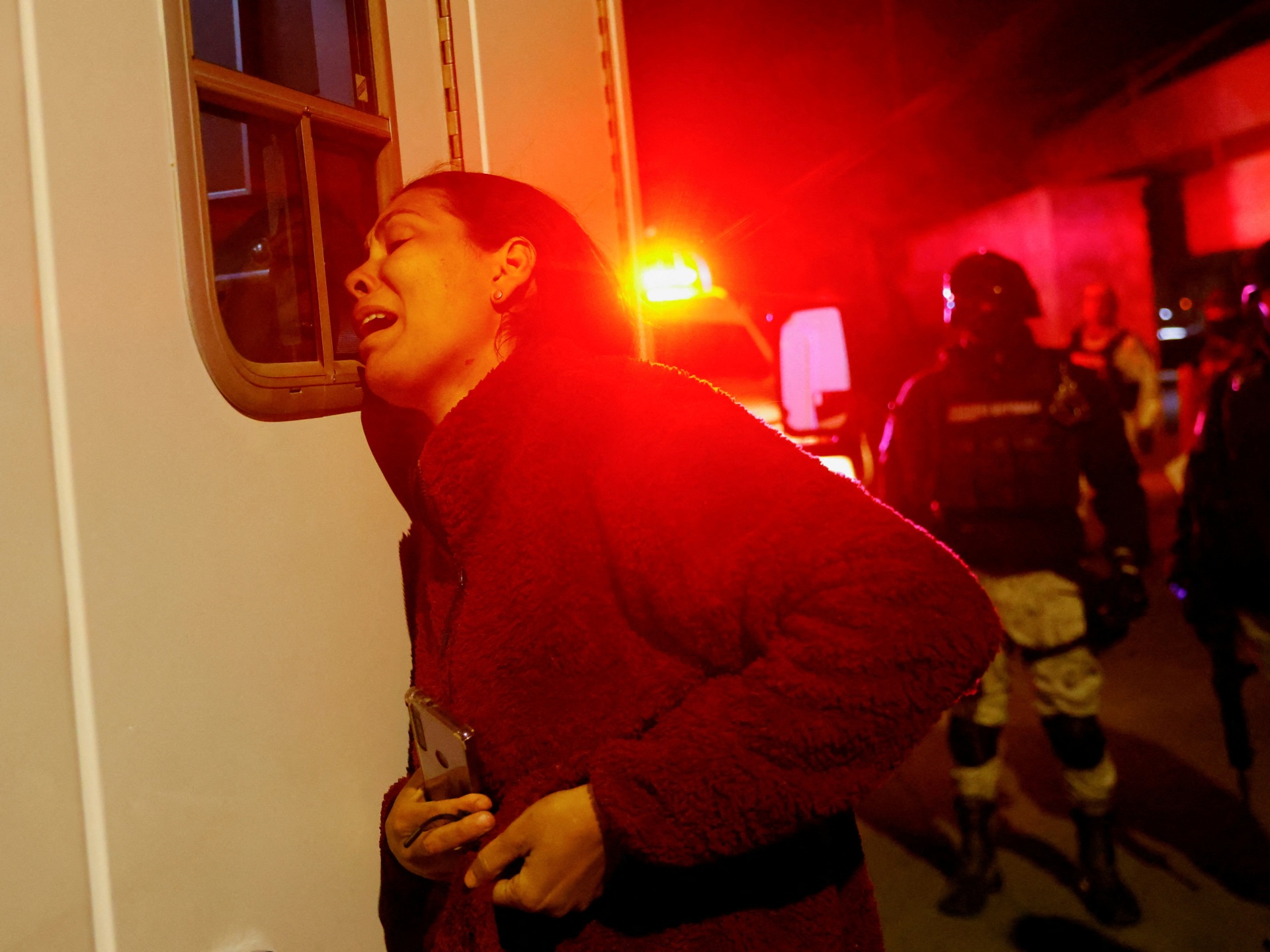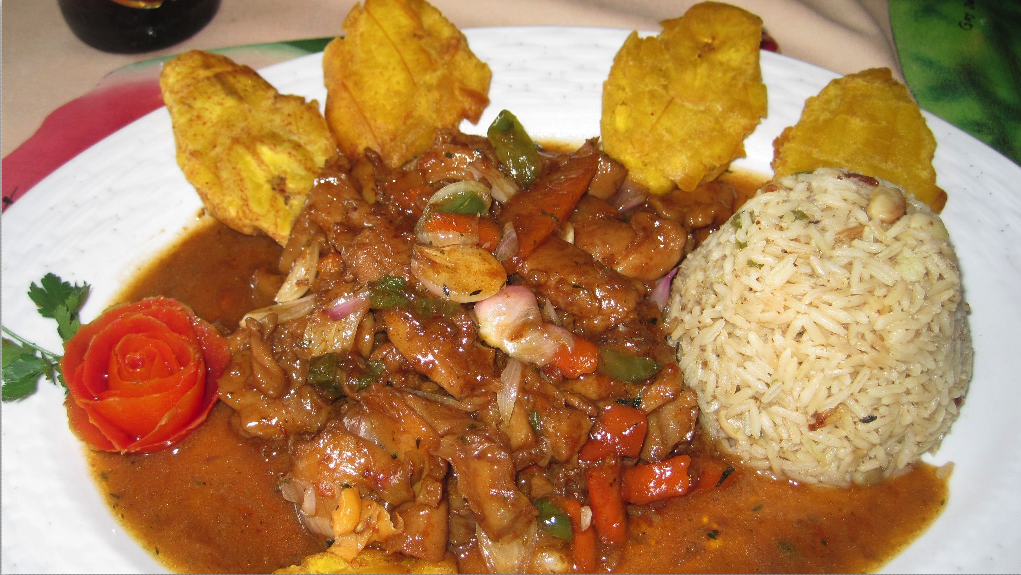Dozens of people have been killed and injured after a fire broke out in an immigration detention facility in northern Mexico near the United States border.
The blaze – one of the deadliest incidents at an immigration lockup in the country’s history – occurred late Monday at a facility in Ciudad Juarez, across the border from El Paso, Texas.
Images from the scene showed ambulances, firefighters and vans from the morgue around the smoke-covered facility with rows of bodies lying under shimmery silver sheets.
At least 38 people died in the fire and 28 injured people were taken to hospitals, Mexico’s National Immigration Institute said in a statement. The facility was holding 68 adult men from Central and South America, it said.
Mexico’s attorney general’s office launched an inquiry and has investigators at the scene, according to media reports.
“I was here since one in the afternoon waiting for the father of my children, and when 10pm rolled around smoke started coming out from everywhere,” 31-year-old Viangly Infante, a Venezuelan national, told the Reuters news agency.
Her husband was in a holding cell inside the facility when the fire started and survived by dousing himself in water and pressing against a door, said Infante, adding that she saw many dead bodies lying on the ground.
Guatemala said on Tuesday that 28 of its nationals are believed to have died in the incident.
Mexican firefighters and soldiers stand during the rescue operation in Ciudad Juarez, Chihuahua state on March 27 [Herika Martinez/AFP]
Mexico’s President Andres Manuel Lopez Obrador said the fire began during a protest by the migrants inside the facility.
“They put mats at the door of the shelter and set them on fire as a protest, and did not imagine that it would cause this terrible tragedy,” Lopez Obrador told reporters.
Al Jazeera could not independently verify the president’s claim. Erika Guevara Rosas, Americas director at Amnesty International, on Tuesday morning called for an investigation to establish the facts of what happened.
Rounding up migrants
The national immigration agency said it “energetically rejects the actions that led to this tragedy”, without any further explanation of what those actions might have been.
Tensions between authorities and migrants had apparently been running high in recent weeks in Ciudad Juarez, where shelters are full of people waiting for opportunities to cross into the US or who have requested asylum there and are waiting out the process.
Mostly Venezuelan asylum seekers rioted inside an immigration centre in Tijuana in October that had to be controlled by police and National Guard troops.
A month later, dozens of people rioted in Mexico’s largest detention facility in the southern city of Tapachula near the border with Guatemala. No one died in either incident.
More than 30 migrant shelters and other advocacy organisations published an open letter March 9 that complained of a criminalisation of migrants and asylum seekers in Ciudad Juarez.
It accused authorities of abuse and using excessive force in rounding up migrants, complaining municipal police were questioning people in the street about their immigration status without cause.
Mexican authorities and firefighters remove injured people, mostly Venezuelans, from inside the National Migration Institute building during the fire in Ciudad Juarez [Jose Luis Gonzalez/Reuters]
Reporting from Mexico City, Al Jazeera’s Manuel Rapalo said tensions have been high in Ciudad Juarez recently with “migrants growing desperate”.
But he noted that despite recent riots and reports of violence at migrant detention centres, the scale of Monday’s tragedy is rare.
“That is certainly something that does not happen every day and once again highlights the many dangers associated with migrants who are desperately trying to reach the United States, making their way across Mexico,” he said.
Rapalo added that Mexico’s National Immigration Institute has been struggling for years to deal with overcrowding at facilities housing migrants.
“Deteriorating conditions in migrant facilities along the border mean vulnerable asylum seekers are in unnecessary danger,” the International Rescue Committee rights group said on Twitter on Tuesday.
“Stronger systems along Mexico’s migration corridors are critical to provide asylum seekers with the protection they need.”
US border restrictions
US President Joe Biden’s administration has been working to stem a record tide of people undertaking often dangerous journeys to get to the US in search of protection.
Many are fleeing gang violence, systemic poverty and other socioeconomic problems in their home countries across South and Central America, and they say they have no other choice but to try to make it to the United States.
While Biden promised to reverse some of the most hardline immigration policies of his predecessor, Donald Trump, he also has maintained deterrence as a key plank of his administration’s approach to migration.
In February, Biden proposed new restrictions on asylum seekers, hoping to stifle the rush of people to the border.
The new rules say those who arrive at the border and cross into the US will no longer be eligible for asylum. Instead, they must apply first for asylum in one of the countries they pass through to get to the US border, or apply online via a US government app.
Migration rights groups have denounced this policy as an effective “asylum ban”, and on Monday the United Nations’ refugee agency urged the Biden administration to reconsider its plan.
“UNHCR is particularly concerned that … this would lead to cases of refoulement – the forced return of people to situations where their lives and safety would be at risk – which is prohibited under international law,” the agency said.
About 200,000 people try to cross the border from Mexico to the US each month.
A recent report by the International Organization for Migration said since 2014 about 7,661 people have died or disappeared en route to the US, while 988 died in accidents or while travelling in subhuman conditions.










